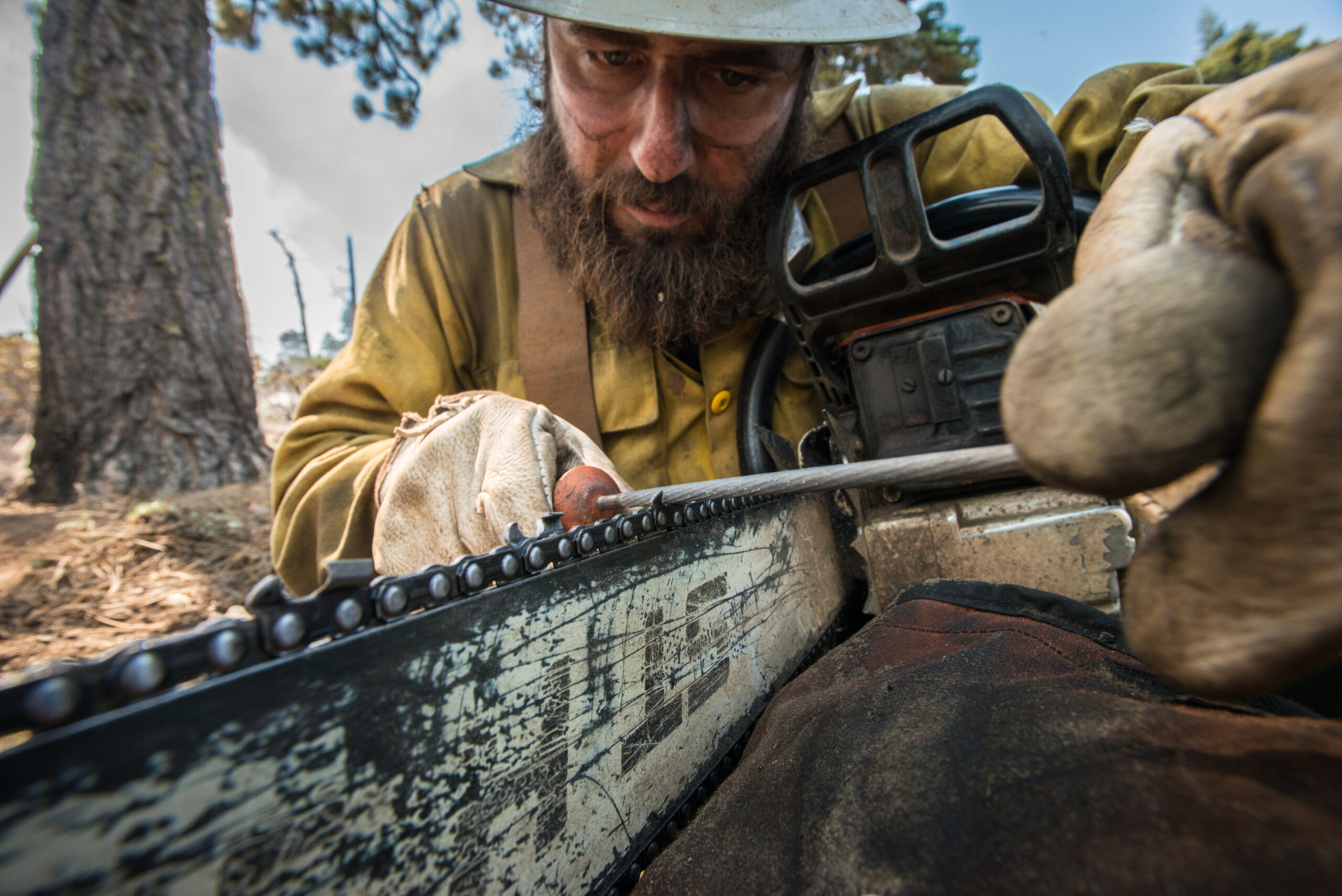Using a high-efficiency wood or pellet stove can be a cost-effective way to reduce your home heating costs compared to other fuels like natural gas, fuel oil, or electricity. According to Penn State Extension, the greatest savings are realized when you cut your own firewood rather than opting to buy pellets or have cordwood delivered. However, there are several hazards associated with use of a chainsaw or ax for felling trees or splitting firewood; the CDC estimates 36,000 people visit hospital emergency departments annually for injuries caused by chainsaws. If you plan to cut your own firewood this winter, it’s important to keep safety top of mind.
Protect yourself: dress appropriately, wear personal protective equipment, be familiar with your equipment and keep it in good working order, practice situational awareness
- Proper attire includes:

USDA Photo by Lance Cheung.
- Fitted clothing
- Safety glasses or goggles
- Cut-resistant legwear or full-length chaps
- Sturdy leather boots that cover your ankles
- Heavy work gloves when working with a chainsaw or handling wood
- A hard hat when there is a risk of being struck over the head (e.g. trimming limbs, felling trees)
- Hearing protection when utilizing a chainsaw
- Read the manufacturer’s instructions for your chainsaw to understand the safety features in place
- Work only with a s harp, well-maintained ax or chain saw
- Chop wood on the ground or on a large, stable log
- Use the right sized equipment for the job
- Continuously keep the work area clear of any trip hazards
- Stay alert by keeping yourself warm, hydrated and fed; take breaks frequently
Protect others: keep bystanders away, store equipment safely when not in use
- Bystanders should be 30 ft. away when you are trimming limbs or cutting fallen trees; keep bystanders 150 ft. away or more when felling trees
- When not in use, keep axes and chainsaws out of reach of others – particularly children
- Never leave an ax leaning up against a stump or wall as this creates a dangerous tripping hazard
- Use an ax sheath to cover an ax when it’s not in use
- The best place to store equipment is in a locked room or cabinet
Felling trees properly and safely requires specific techniques. If you are planning to fell even one tree this winter, prepare yourself by reading extensively about these techniques and do not hesitate to reach out to a professional forester or certified tree expert for advice.
References
Carrabba Jr., J. “Be Safe with Your Chainsaw This Winter.” NYCAMH, November 2007. https://www.nycamh.org/resources/articles.php#logging. Accessed 22 November 2021.
Ciolkosz, D. “Wood Heat for Your Home: Does It Pay Off?” PennState Extension, 2016 June 7. https://extension.psu.edu/wood-heat-for-your-home-does-it-pay-off. Accessed 1 December 2021.
“Preventing Chain Saw Injuries During Tree Removal After a Disaster.” Centers for Disease Control and Prevention, 2017 October 17. https://www.cdc.gov/disasters/chainsaws.html. Accessed 22 November 2021.
Vodak, M. “FS593: Woodlot Management: Working Safely in the Woods.” Rutgers NJAES, 1 February 1993. https://njaes.rutgers.edu/pubs/publication.php?pid=FS593. Accessed 1 December 2021.
Weisgerber, B. “An Ax to Grind: A Practical Ax Manual.” USDA Forest Service, July 1999. https://www.fs.fed.us/t-d/pubs/pdfpubs/pdf99232823/pdf99232823Pdpi300.pdf. Accessed 1 December 2021.
West, D. “Safety in the Woods.” NYCAMH, October 2000. https://www.nycamh.org/resources/articles.php#logging. Accessed 22 November 2021.

